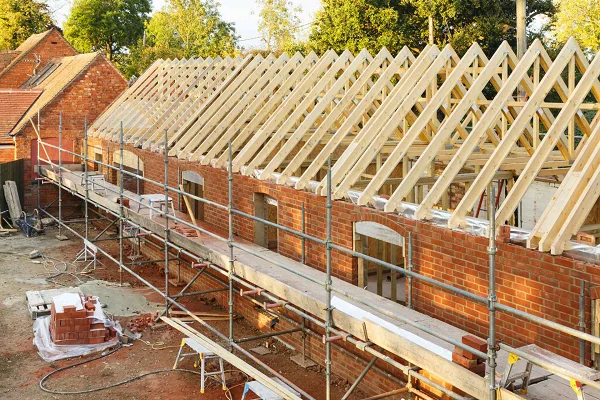Using a Bridging Loan for Property Development

While there may be no shortage of specialist development finance products available in the UK, most are restricted to individuals with extensive experience and a well-established presence in the field. Something that can (and often does) count inspiring and ambitious newcomers out of the running
This is where bridging loans have the potential to offer a more flexible and accommodating alternative, issued almost entirely on the basis of available security and a feasible exit strategy.
How does a bridging loan work?
A bridging loan is a type of short-term financing, generally lasting between six months and two years. It’s designed to “bridge” the gap in funding that can occur during the purchase or development of a property, enabling the developer to keep their own cash as liquid as possible for the duration of the project.
The flexibility of bridging finance has made it a go-to option for a broad range of purposes, including:
- Buying properties at auction to fix up
- New ground-up property developments
- Conversion projects (residential and commercial)
- Renovation or refurbishment of properties
- Purchase of land for development
The lender secures the loan against the value of the property or development, and once it is sold or alternative financing is secured, the loan is repaid in full.
Why is bridging finance a great choice for property development?
Ease and speed of access to funds are two of the biggest points of appeal with bridging finance, which can make a significant difference in property development.
Bridging loans, sometimes called property development loans, are designed to fulfil the needs of developers at short notice, allowing them to cover unexpected costs and take full advantage of time-critical purchase or investment opportunities.
Just a few of the potential benefits of bridging loans for property developments include the following:
Super-fast completions
Unlike traditional loans, which could take weeks or months to finalise, bridging loans, once approved, can be completed within a matter of days, sometimes just 72 hours. This is particularly beneficial in competitive business landscapes like property development, where time is of the essence.
Competitive rates
Monthly interest rates can be as low as 0.5%, making for unbeatable value for money when the debt is repaid early. Unlike longer-term loans, where compounded interest can quickly escalate, the short duration and competitive rates of a bridging loan keep costs down.
Flexibility
Unlike most conventional property development loans, bridging lenders do not impose heavy penalties for early repayment. In fact, most encourage early repayment to enable the borrower to save money.
No monthly repayments
The interest on a bridging loan is typically ‘rolled up’ until the end of the term, which means there are no monthly repayments to consider during the term of the bridging loan. This can significantly aid cash flow, particularly vital in property development where funds are generally tied up in the actual development.
Covers a range of expenses
From purchasing land to covering construction costs to renovation expenses, a bridging loan can cover a wide range of costs associated with property development.
Bridging vs. development finance
In essence, bridging loans mirror many of the features and benefits of specialist development finance, only with the added bonus of greater accessibility and flexibility. If you are able to provide your lender with formal evidence of the value of your property or project and a convincing exit strategy (how and when you intend to repay your debt), you have a higher chance of qualifying, irrespective of your experience in the field.
Plus, whereas property development finance is released in a series of stages tied to the completion of major project phases, the full balance of a bridging loan is transferred to the borrower in a single lump sum.
This alone can make it a preferable option for many property developers, who would prefer not to have to wait for subsequent instalments to be released.
